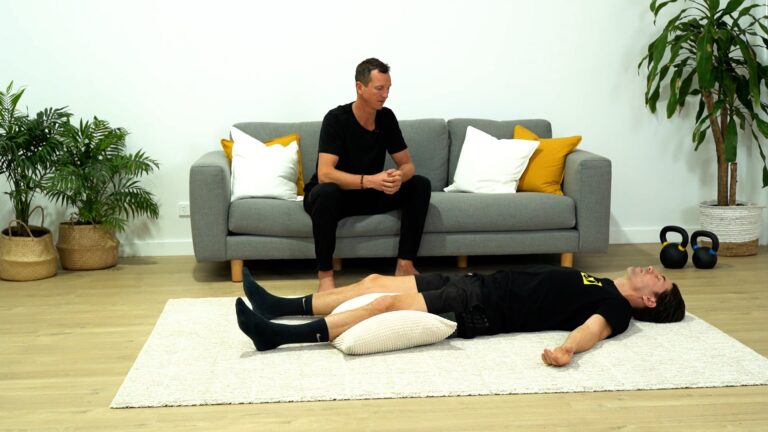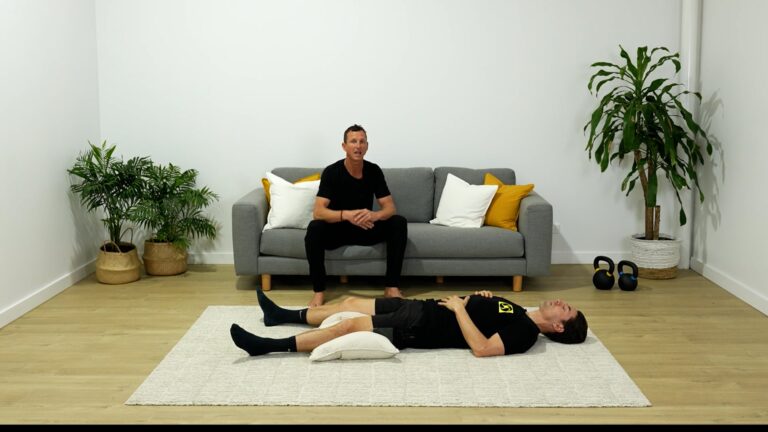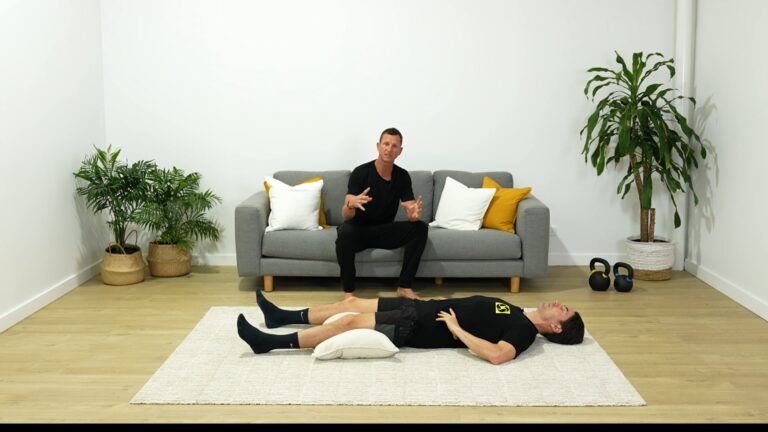We all know the feeling of waking up after a great night’s sleep. You drifted off without worries, and it almost felt like somebody transported you to the morning. Full of natural energy and ready to take on the day.
Unfortunately, we also know the feeling (probably more so) of waking up unrested, groggy, a bit cranky and like you could hit snooze for hours. So, what creates this divide? What is happening within the different stages of sleep to affect this feeling so drastically?
Every night you head into bed, you go through a wave of different sleep phases. Although you are unaware of this while sleeping, your body and mind work together actively.
There are four stages of sleep: awake, light, deep and REM. All four stages are essential in optimising your physical and mental well-being. Each step of sleep also plays a role in how you feel the next day. Below, we will explain which stages restore your brain and which restores your body. Whether you’re maintaining a good balance between the stages each night is the key!
Stage 1: Awake.
Awake sleep is categorised as the time spent in bed before and after sleeping. It also includes the brief (or lengthy, depending on your stress levels) periods in the night waking up during sleep. However, this stage of sleep may not seem as crucial as others. The inability to sleep can affect the quality and quantity of the following three stages.
Stage 2: Light Sleep
Don’t be fooled by the name; light sleep is crucial for giving you a restful night and feeling refreshed when you wake up. Light sleep is an essential sleep stage that benefits your brain and body. Within light sleep, this is where you develop memories and enhance creativity.
Scientists believe that much of our memory-building and processing occurs during this stage. The process in which our short-term memories are turned into long-term memories. Light sleep is far easier to wake up from and will leave you feeling less groggy and potentially more alert if you wake from a light state. Therefore, this is why naps are often recommended to last no longer than 30 minutes, as you’re more likely to still be within a light sleep state, meaning it will be much easier to wake from.
You should be spending around 50% of your sleep in light sleep. If you get the recommended 7-9 hours of sleep, you’ll optimally spend about 3-5 hours per night in light sleep.
Stage 3: Deep Sleep
Deep sleep is the pinnacle of sleep stages. Although short-lived, deep sleep is the stage that leaves you feeling rejuvenated and alert. Throughout this stage of your sleep cycle, your body will begin restoring and repairing your mind to your muscles. Deep sleep is where the sweet stuff starts for the body.
During deep sleep, your body is at its most relaxed, your heart rate and breathing will be at its lowest rate, and your muscles will be at ease. Approximately 10-20% of your sleep is spent in deep sleep, so only a small portion of time. However, it is still crucial to your body’s recovery process. If you’re wondering whether you get enough deep sleep, notice whether you’re waking up feeling groggy more often than not. If you’re waking up unrested, this may indicate that you’re potentially not getting enough deep sleep.
You can implement various techniques and tools to help increase the amount of deep sleep you get. Such as:
- Get more exercise! Exercise has been consistently shown to play a positive role in sleep, sleep habits and the quality of sleep. Moderate to heavy activity can increase deep sleep. Don’t worry too much about the timing of the workout; just try to avoid working out (especially intensely) within a few hours before bed.
- Get into bed earlier. As deep sleep is recorded more so within the earlier hours of the night, you can ensure you get more deep sleep by going to bed earlier.
- Being consistent with your sleep schedule. Circadian rhythms play a significant role in deep, restful sleep quality. So, trying to create a consistent sleep schedule by going to bed and getting up at the same time is crucial. Yes, this includes weekends!
- Creating a wind-down routine. Heading into bed relaxed will increase your sleep time and enhance your ability to fall into a deep sleep faster. Wind-down routines can be as simple as dimming the lights a few hours before bed, journaling, meditating or having a hot shower and reading for 15-20 minutes before hitting the hay.
- Eat more fiber! As if fibre couldn’t have enough benefits already. Turns out it can play into the amount of deep sleep you get. Fibre is understood to increase the quality of deep sleep by increasing slow-wave activity and duration. Fibre includes all veggies and fruits, especially the dark leafy greens! It’s more of a reason to incorporate nourishing salads and veggies for dinner.
- Simulate your brain with learning. Evidence suggests that learning a new skill or task can create a cognition increase that promotes deep sleep. While in deep sleep, you’re more likely to remember and enhance whatever craft you are learning. So it’s a double whammy!
- Reduce blue light at night time. It’s probably not the first time you’ve seen this recommendation. However, blue light (think computers, iPhones, TV screens, etc.) can negatively affect your melatonin levels (melatonin is your sleep hormone). So, blue light exposure at night can be a sleep disruptor and negatively affect the quality and quantity of your deep sleep. Try blue-blocking glasses in the evening, and invest in good quality blinds/shutters and a light-blocking eye mask. Even the tiniest bit of light in the bedroom can disrupt the quality of your sleep!
REM SLEEP:
REM stands for ‘rapid eye movement’ and is one of the four main sleep stages. Critical for emotional resilience and brain health. During REM sleep, your heart rate will increase, and breathing patterns can become irregular. Your brainwaves will also begin to mimic the activity you had while awake. REM sleep is the stage where somebody will experience many vivid dreams.
REM sleep cycles will occur every 90-120 minutes. You are experiencing your first cycle for approximately 10 minutes. However, you’ll increase your time in REM sleep with each process throughout the night. REM sleep predominantly takes place in the second half of the night. If you are averaging a recommended 7-9 hours of sleep per night, you should expect to spend around 20-25% of your sleep in REM sleep.
The benefits of REM sleep include processing and managing emotions, which can dictate how you feel and how you respond and react to situations throughout the day. REM sleep is associated with the amygdala, the part of the brain responsible for stress, fear, and anxiety. If you notice that you are feeling extra sensitive or potentially heightened, this may be due to a lack of REM sleep. REM sleep also plays a critical role in learning and processing thoughts and memory. Next time you’re trying to decide, and someone tells you to “sleep on it”, think of REM sleep!
How to get more REM sleep?
- Avoid alcohol and marijuana close to bedtime. No shock that alcohol affects your sleep, massively. So definitely be conscious of the timing of your last drink and try to give yourself at least a few hours before bedtime without it. Oura explains the various effects that alcohol has on sleep. However, alcohol has been shown to negatively affect sleep by decreasing the amount of time asleep, creating a more restless night’s sleep and leading to less REM sleep overall. Studies suggest that marijuana, in long-term use, can drastically reduce the amount of time an individual spends in REM sleep.
- Supplement with magnesium. Magnesium is a vital supplement for quality of sleep and recovery. Magnesium can promote the amount of time spent in REM sleep and allow the body to replenish and rejuvenate overnight properly.
- Be aware of your light exposure. More sunlight in the day, less blue light in the night! Throughout the day, your body processes how much light it is exposed to and, more importantly, how much of it you get first thing in the morning. If there is not enough sunlight (even when it’s cloudy) in the first part of the day, paired with too much blue light in the evening. The lack of the sun throughout the day can create a recipe for failure when getting enough REM sleep. Try getting out for 30-40 minutes every morning, even if it’s cloudy, and turn off blue lights (laptop screens, TV, etc.) 2 hours before bedtime. If work is a non-negotiable for you in the evenings, invest in a good quality pair of blue-blocking glasses while aiming for a wind-down routine before bed.
- Cool it on the caffeine. Everyone will digest and metabolise caffeine at a different rate. However, caffeine is understood to stay in your system for up to 9 hours! A good rule of thumb is to avoid caffeine after noon and aim for decaf or herbal tea beyond that point. Caffeine can prolong the time spent trying to get to sleep – this can minimise the amount of time you spend in REM sleep overall.
- Keep your room as cool as possible. It’s no surprise we all sleep better during the colder periods. This is due to your body temperature increasing as it heads into REM sleep. By keeping your bedroom cool and aiming for minimal clothing at bedtime – you’re more likely to be able to regulate your body as it heads into REM sleep.




Responses